Few churches can boast the beautiful rural setting enjoyed by St. Francis’ Church at Meelick on the western bank of the River Shannon. Similarly few may boast the same long and rich history of this church, which this year celebrates six hundred years in existence.
Founded originally as a Franciscan friary, the last remaining Franciscan friar bid farewell to the decaying Meelick friary and sailed upriver to his Order’s house at Athlone in the aftermath of the Great Famine. His departure brought to an end the almost continuous association of the Franciscan Order with Meelick since the Antipope John XXIII wrote to the then Bishop of Clonfert granting permission for the friary’s foundation in July of 1414. The site subsequently became the property of the diocese of Clonfert and was restored as a diocesan church. Today it is one of the oldest Roman Catholic churches still in use in Ireland.
On Saturday 5th July 2014, over one hundred and sixty years since the departure of the last friar, a small crowd gathered in the afternoon sunshine at the quayside at Meelick to greet the two boats carrying the Apostolic Nuncio, the Bishop of Clonfert and a small group of Franciscans led by their Minister-Provincial.
Only a short distance further up the road, the ancient St. Francis’s Church at Meelick was packed to capacity as the congregation awaited the arrival of the visitors to commemorate the six hundred year anniversary of the old church.
Three o’ clock Mass would be only slightly delayed as the visitors and welcoming party walked the fifteen-minute distance along the narrow winding country road from quayside to church.
Sisters of the Ballinasloe-based Franciscan Missionaries of the Divine Motherhood waiting for the boats
Donnacha, Richard and Rory Campbell with James Scully among those waiting by the riverside for the arrival of the visitors.
Two boats, piloted by Mattie Ryan and his son Mark from Clonfert, brought the visitors from Banagher to Meelick. The morning showers gave way to humid summer sunshine as the boats came into view of the quay.
The author extending an official welcome to the visitors at the quayside as Chairperson of the Parish Pastoral Council.
From left to right; Donal Burke, Fr. Brian Allen OFM, based at the Franciscan Convent at Athlone and who played an early role in the organisation of the Franciscan involvement in the celebrations, Fr. John Naughton PP, Archbishop Charles Brown, Apostolic Nuncio to Ireland, Fr. Kelly and Fr. Hugh McKenna OFM, Minister Provincial of the Franciscans in Ireland.
The author chatting with Fr. McMahon OFM of the Franciscan friary at Merchant’s Quay in Dublin. Fr. McMahon carried in a green box a seventeenth century chalice presented to the friary at Meelick in 1640 and now held in the National Museum of Ireland in Dublin. The chalice was given on loan by the Museum for the day of celebrations and entrusted to the care of Fr. McMahon. I was delighted when Fr. McMahon informed me he was a reader of this website.
The short walk from quayside to church.
Mikey Horan and Stephen Kenny from Meelick waiting near the church for the walkers.
Volunteers attending to traffic management relaxing as they wait for the walkers outside the local public house known as ‘The Shop.’
The six Altar servers, lined up to greet the visitors inside the church gates.
The church bell rang out in the distance as the group wound its way and the slated roof of the church came into view across the fields. Lined up inside the church gates, young altar servers, boys and girls, waved their yellow and white flags as the first of the group climbed over the old narrow bridge at the entrance to the church grounds. The Papal Nuncio, leading the walkers, paused to say a few words with each before making his way to the sacristy in the company of the Bishop and the Master of Ceremonies Monsignor Cathal Geraghty, Vicar General of the diocese, to vest.
Arrival at Meelick church
In the sacristy before Mass, Ciaran Coughlan ringing the bell
I visited Meelick earlier that morning and I remember seeing a couple of men seated fishing at the quayside and thought to myself that they were in for some surprise in an hour or two when the normally tranquil quay would be inundated with vessels and people. At that time the church was beautifully appointed and almost empty, many of the volunteers and Pastoral Council having stayed until after midnight the previous night preparing the grounds.
The church as it lay ready that morning for the later celebrations.
The view from the sacristy door towards the twentieth century rood screen and nave. Below seating for the clergy and choir behind the altar.
The processional tau cross specially carved for the occasion and donated by the Franciscans at Killarney. Pat Kelly, a noted local carpenter living on the nearby Redmount Hill near Eyrecourt, produced the cross stand and four matching timber chairs for the celebrant and principal concelebrants.
Refreshments were laid out in what was at one time the small chapel of the friars while the church proper lay in ruins. For the celebrations a temporary canopy was erected to protect the refreshment tables from the elements.
Tents were erected, one in the former cloister area and one at lower level, the former to house the additional congregation on the day and the latter to provide a vesting area for clergy.
Fergus and Mrs. Madden from Eyrecourt selling copies of a new history of Meelick friary in aid of the church restoration fund.
Some of the waiting diocesan clergy and Franciscans preparing to join the entrance procession.
Fr. John Naughton preparing for the entrance procession.
The Papal Nuncio, preceded by Bishop Kirby, at the rear of the entrance procession.
The Papal Nuncio incensing the altar at the beginning of mass.
Father Naughton, Parish Priest of Eyrecourt, Clonfert and Meelick, welcomed everyone in his opening remarks. He described the day’s celebrations as ‘a kind of pilgrimage, as we walk in solidarity with people past and present renewing our faith in the place where our ancestors gathered in faith and suffered for it in the fifteenth century.’…’As Irish people it is in remembering our past that we draw energy and imagination to create a new tomorrow.’ ‘Today, remembering our Christian ancestors, we walk with pride in their footsteps and with gratitude for the rich legacy that have left us.’
Bishop Kirby reminded us that the church was founded several decades prior to the discovery of America by Christopher Columbus.
Readings were read by Sister Kathleen of the Franciscan Missionaries of the Divine Motherhood based at the Portiuncula convent in Ballinasloe and Mrs. Mary Killeen from Meelick, while the Gospel was read by Monsignor Alan Malone and members of the local community were involved in reciting the Prayers of the Faithful.
For his part the Papal Nuncio said he was delighted to be in Meelick on this historic occasion. His far-reaching sermon touched upon the importance of faith and among other themes the fact that, while the building, Meelick church, is the house of God, it is called the church because it is in this building that we, the Church, come to pray. He reminded the congregation that ‘for six hundred years in this church people have worshipped. Most of those people are now in Heaven waiting for us. They inspired us by their example. This is now our time to live our faith, to strengthen our faith.’
This area of Ireland he said was very special to him given the proximity of the burial place at Clonfert of St. Brendan the Navigator. When sent in May of 1989 as a newly ordained priest in New York to his first and only parish; St. Brendans in the Bronx, he little imagined that one day, twenty-five years later, he would visit ‘the place where St. Brendan finished his days on this earth.’ This year he celebrated twenty-five years of priesthood, by coincidence as does Fr. Hugh McKenna OFM. Both paled he noted in comparison with Fr. Naughton, who this year is celebrating fifty years of priesthood, the acknowledgement of which the congregation greeted with applause.
It was difficult not to be moved in some slight degree, sitting there in this ancient church, surrounded by the Franciscans, diocesan clergy and choir intoning the gloria, its walls lined with memorial tablets to long dead benefactors from the seventeenth century and later. It had seen many changes down the centuries, some more dramatic than others.
In 1557 the English Lord Deputy, in a move to unseat the rebel O Connors and O Maddens from the now vanished Meelick Castle, had ordnance sailed down the Shannon on boats and had a cannon installed at the friary to fire upon the castle. (A soldier named Barrett standing in the friary on that occasion was shot by a handgun firing from the castle. ) The friars survived the religious persecution from the Elizabethan era, the intolerance of her nephew James I, the Crowmwellian years and the Penal Laws of the early eighteenth century. While extensive written records survive in relation to Meelick, little survived from the early 1600s. However, their continued presence at Meelick was attested by chalices such as that procured for the friary in 1616 by Brother James Coghlan.
On occasion the friars found refuge in a nearby wood in the townland of Muckanagh, while the church itself spent a great deal of that time in ruin. On the accession to the throne of the Catholic King James II, many friaries anticipated a period of relief and the friars at Meelick undertook re-building works in the 1680s. The works were still incomplete by the time King James II was deposed in favour of his son-in-law and daughter the Protestant King William and Queen Mary. In the ensuing Jacobite Williamite War the English Jacobite officer Captain John Stevens camped with his regiment for more than a week at Meelick in June of 1691 on route from Limerick to Athlone, prior to the battle of Aughrim. His diary recorded the incomplete nature of the works by that time;
‘Here is also the residence of a few Franciscan friars, only remarkable for the poverty of their house and chapel, which are nothing but long thatched cabins. The walls of a handsome chapel designed by these friars are standing, but never roofed or further finished than the raising of them to their full height.’
Two side chapels were added to the south wall but, like the church itself, were in ruin, overgrown with vegetation and used as a burial place into the nineteenth century. The friars continued to use a smaller domestic building on site adjacent to the church as their chapel and was still used as such in the mid nineteenth century.
Meelick church seen from the graveyard to the south, showing the traces on its south elevation of the two former side chapels.
The friars, despite their trials under a repressive government, maintained a strong connection with the remnants of the old local Catholic gentry who served as benefactors until many of the senior-branches of these families converted to Protestantism over the eighteenth century, in many cases to acquire secure title to their estates. In the early days leading up to the Penal Laws the friars entrusted their valuables to ten trusted locals of good standing while they prepared to be banished. Many were forced to study and live abroad on the Continent but maintained contact by letter with one of their number who maintained a presence around Meelick. Their correspondence survived due to the confiscation in the 1730s of several of these letters by the authorities.
In the mid eighteenth century there were about five friars attached to Meelick but this had dwindled to three by the early nineteenth. Dr. Petrie, when he visited the site about 1832, found that the few friars ‘inhabited a small dwelling-house annexed to the old abbey, adjoining to which they had a chapel, where they performed divine service. They had a few acres of land on lease from the Marquis of Clanrickard…..The once rich library of the abbey was reduced to the few mutilated volumes of school divinity, perishing through damp and neglect, and at that time the roofless walls of this once sumptuous building were mouldering in decay, or falling prey to the ruthless band of modern vandals. The beautiful pillars that separated and supported the arches, on the north side (recte; south side), had been torn away to supply headstones for the humble occupants of the neighbouring graveyards.’
A contemporary print showed the friary church as a ruin, without a roof or east gable. Vegetation grew among assorted headstones and recumbent slabs in the same church wherein we all gathered today to pray. The west gable with its stone cross was intact, and most of the north and south walls of the nave were still standing up to wall-plate level, but there was no transept or side chapel to the south and the column between the twin transept arches was missing. The only roofed building in view was the low single-storey building adjoining the church, part of which then formed the chapel. (Part of this now forms the sacristy and that part that formed the small chapel now stands roofless).
Dr. Richard Robert Madden, who claimed descent from a senior member of the O Madden family and felt a certain affinity for this friary, reminisced more than fifty years later on a visit he paid in 1841 to Meelick. He recalled listening to the keening of local women in the friary graveyard and ‘while I was thus listening one of the Franciscan Fathers of the adjoining Convent, whom I had known before, approached and renewed acquaintance…I was then conducted into the adjoining convent occupied by himself and two other friars – last survivors of the once famous community of Meelick – where I received every possible kindness and hospitality during my brief stay in this most interesting locality.’
At that time, he said, ‘there was little left of the ancient abbey but the roofless walls, ruined aisles and beautiful pillars mouldering in dust to attest to its former splendour.’ Madden went on; ‘more than once have I knelt in the little Friary chapel at vesper hour and listened to the strain of the hymns echoed from the lonely aisles of the adjoining ruined abbey….At length my visit to Meelick came to a close on a bright Sunday morning and I can never forget the scene of my departure. The friary gates were still crowded with a group of kindly peasants coming forth from the little chapel, as their good pastor, my hospitable host, an aged friar, of venerable aspect and splendid physique, clasped my hand’ and gave to Dr. Madden his parting blessing. Madden thereafter had to press on to meet the mail coach at the nearby village of Eyrecourt. (I often think of this melancholy image when I’m at Meelick and looking down from the church towards its arched bridge and old gates. Melancholy because when Madden would return thirteen years later his old friend, the aged friar, would lie dead and buried at Meelick and the church deserted.)
There were only two friars here in 1846. In the following year the antiquarian John D’Alton romantically described the friary ‘in beautiful seclusion’….‘where the Shannon, flowing through these fertile lowlands, here called callows, or by some caucesses, encircles a number of little islands, and winds and brawls over a ledge of shallow rapids.’ Of the old church he wrote ‘its serrated walls are beautifully wreathed with ivy; elder trees, thickly fenced with fern and nettle, fill the interior; and through the windows and arches, which on the southern side are nearly perfect, the little plantation of the graveyard, a sodded fort, the Shannon and its islands in front and the Munster hills in the distance, presented a scene of lulling repose that was scarcely disturbed by the murmer of the fretted river, the lash of the anglers rod, the rustling of the small birds through the ivy or the gliding of the two inmates of the adjoining friary, who, with peculiar propriety, here read their breviaries and offices amid the tombs.’
The friars were, by 1850, in rental arrears to the Marquis of Clanricarde, who displayed little sympathy for their plight. The Franciscan friars finally abandoned Meelick in 1852. When Dr. R. R. Madden visited Meelick again in February 1854, he found the friary closed and deserted. ‘At Meelick churchyard at rest forever’ he said ‘was my old friend the Franciscan friar.’ ‘The abbey had ceased to be tenanted, and of the remains of the library nothing was left save some odd and mutilated volumes that had not been thought worth the trouble of removal.’ ‘Adjoining the ruined abbey…the Franciscan convent, which never ceased since the abbey was erected to be tenanted by members of the Order, except at brief intervals during the wars of Elizabeth and Cromwell, until the past couple of years, when one of the community…having died, the survivor, Mr. Fannin, found it impossible any longer to procure a living here, as the neighbouring country had become so depopulated and impoverished during the famine year.’
The church became a diocesan church in the diocese of Clonfert and was restored in the last years of the nineteenth century, its walls plastered internally and its east gable rebuilt, but in a slightly different position to take account of an early nineteenth century tomb built on its original position. It subsequently went through various other restoration and refurbishment works in the mid twentieth century, the last major project undertaken in the 1980s.
Fr. McMahon OFM with the chalice known by some as the Meelick Chalice. The chalice is more correctly the ‘Paul Mulgeehy’ or ‘Paul O Mulgaoihe’ chalice, named after the donor ‘Fr. P. Paul O Mulgaoihe’ who procured the chalice for the Meelick friary in 1640. The chalice was in the care of the Franciscan friary in Drogheda in the mid twentieth century and is now held in the National Museum of Ireland in Dublin.
It fell to me, on behalf of the Parish Pastoral Council and local community, to thank the distinguished visitors and all of the Franciscans, First Order, Third Order and the sisters of the Franciscan Missionaries of the Divine Motherhood for their presence and to thank all of those who participated in making the day such a success.
Following Mass and before enjoying the ample refreshments laid out under a temporary covering in what was formerly the nineteenth century chapel the Papal Nuncio planted a young yew tree on the lawn beside the church to commemorate the historic occasion.
Fr. Hugh McKenna OFM, Minister Provincial of the Franciscans, Bishop John Kirby and Archbishop Brown with Fr. Naughton, a number of the Franciscans and members of the Eyrecourt, Clonfert and Meelick Parish Pastoral Council on the lawn with the newly planted yew tree.
When one considers the dramatic history of this site and the considerable written records that have survived detailing the lives of the friars and their benefactors, it cannot escape notice that this day was a significant day in the life of this particular church. As significant as the day in June of 1643 when, two years after the Catholic Irish rose out following a period of oppression, the friars recorded that ‘the graveyard of the church of the brothers minor of Meelick was reconciled by the Venerable Father and Brother John Madden,’ then President of the Meelick community, and ‘the honour that was proper was shown to the feast of Corpus Christi.’ It was as significant as the day in 1985 when Most Rev. Joseph Cassidy D.D., Bishop of Clonfert, celebrated Mass to mark the official re-opening of the church after renovation work at that time and certainly as significant as that sad day when the last remaining friar left Meelick after the Great Famine.
For myself the image that I carried with me as I left the church that day was the sight of the friars in their brown habits walking again the narrow winding country roads of Meelick returning if only for one day to their old home and welcomed enthusiastically by the local population to whose ancestors the friar’s predecessors ministered for centuries.



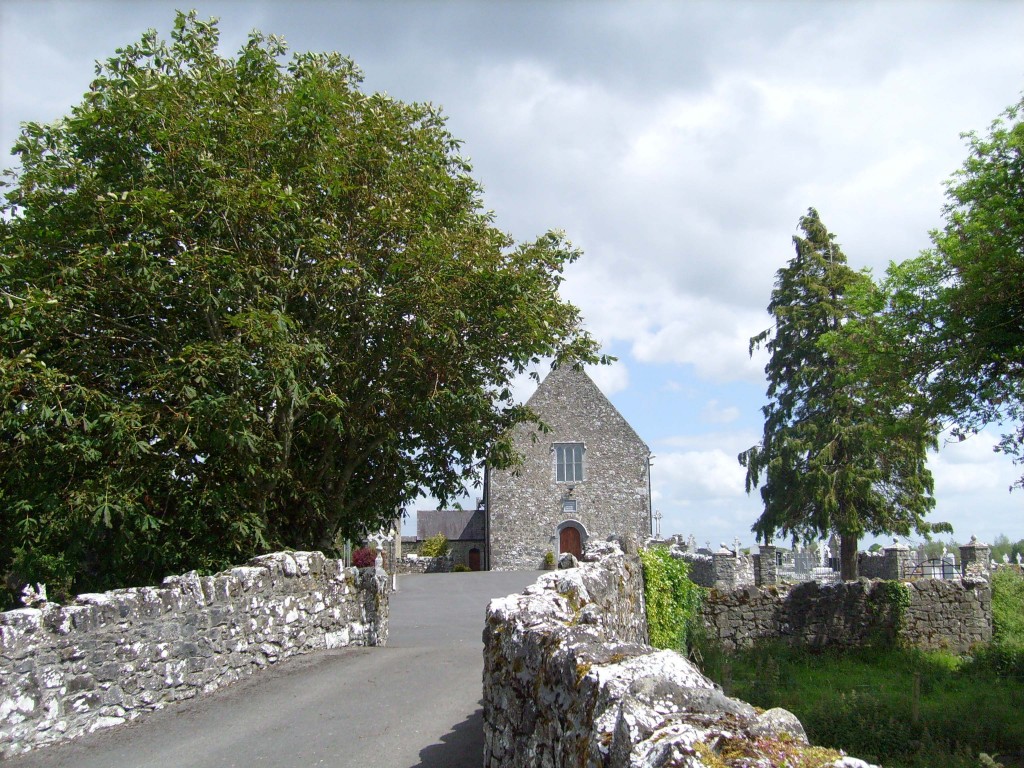
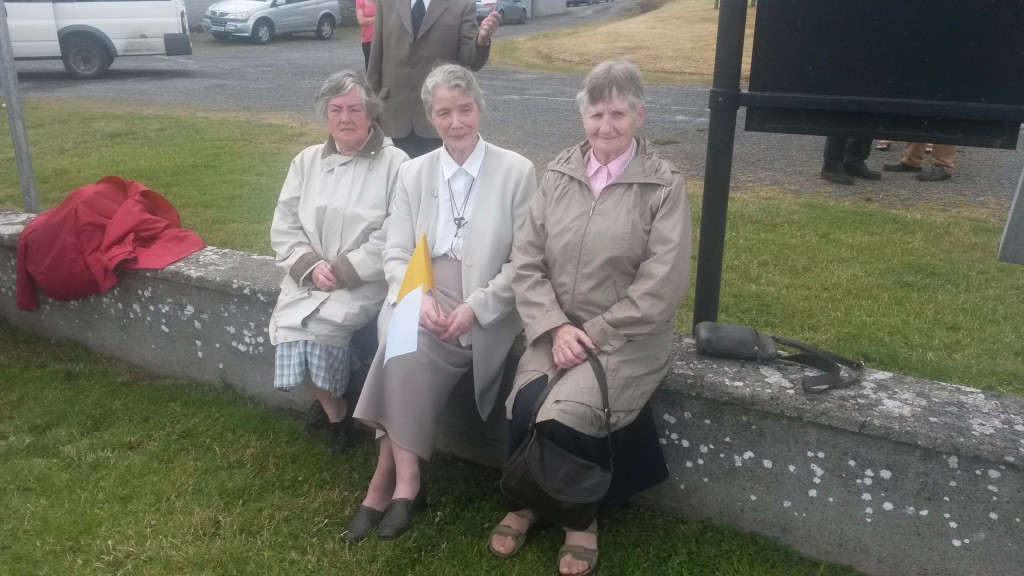
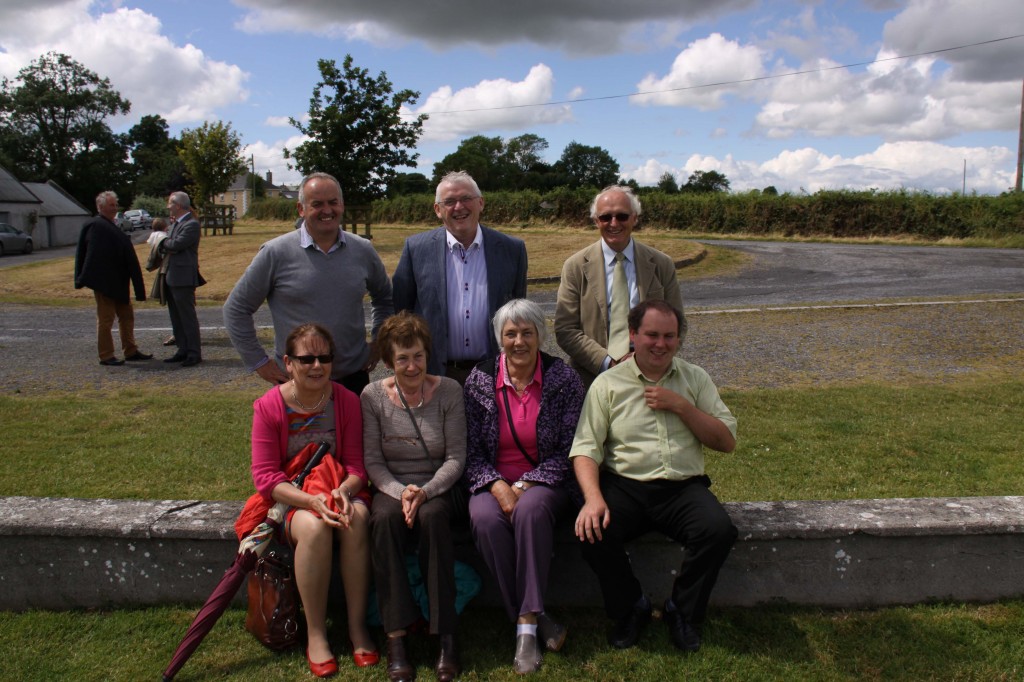
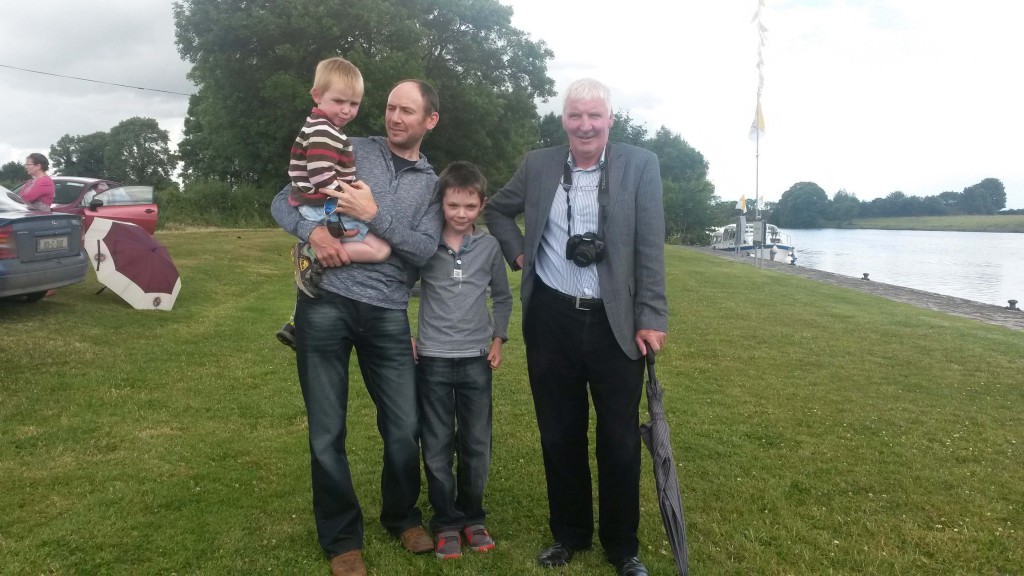
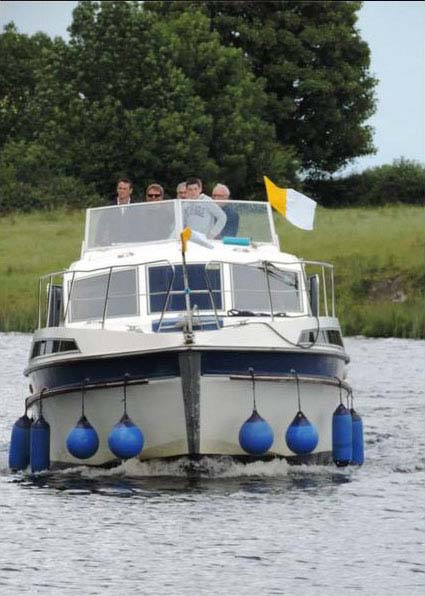
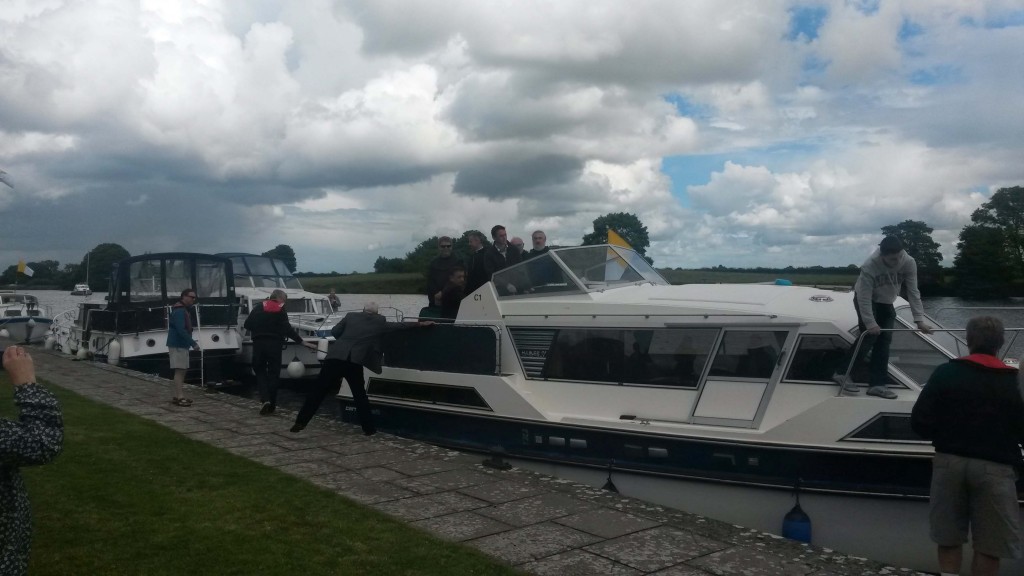
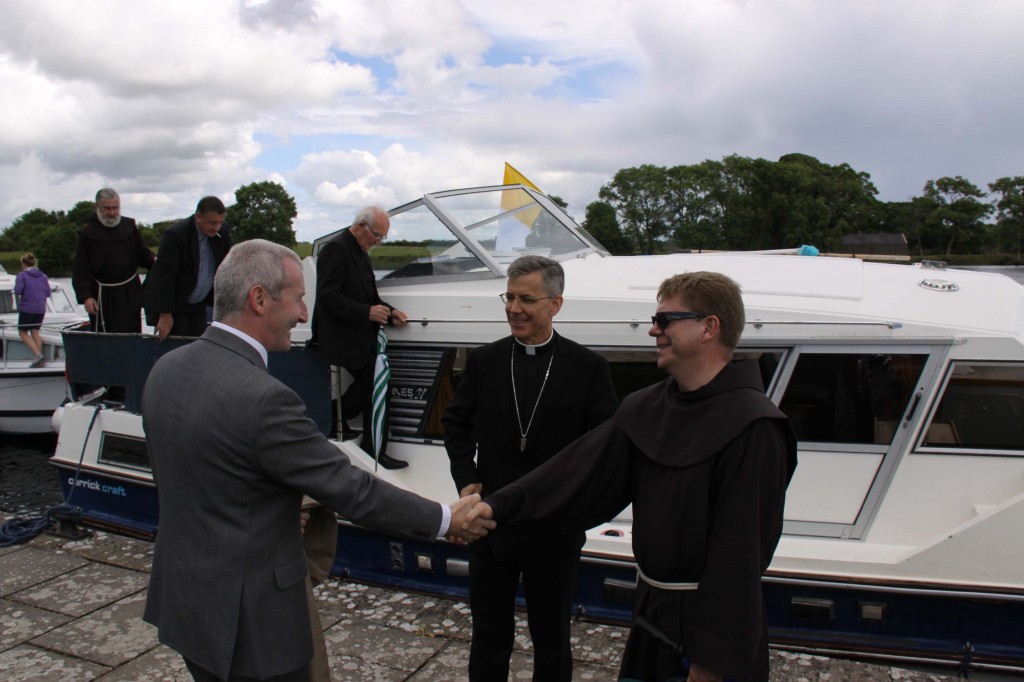
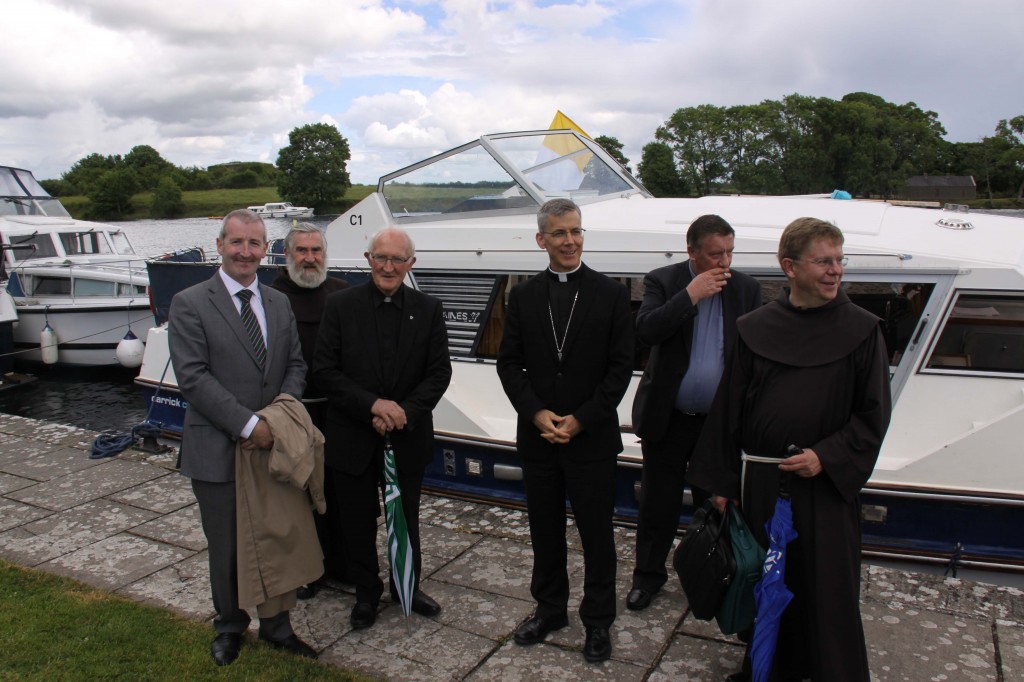
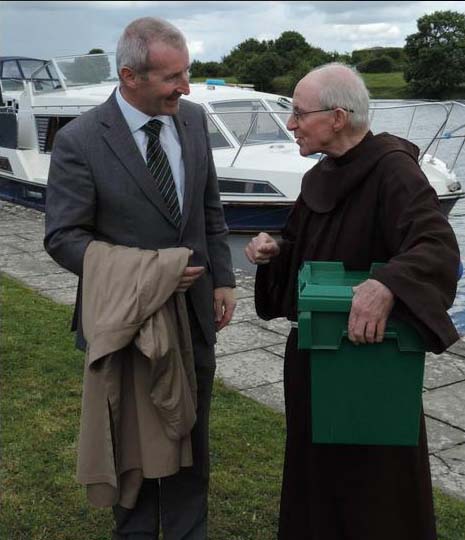
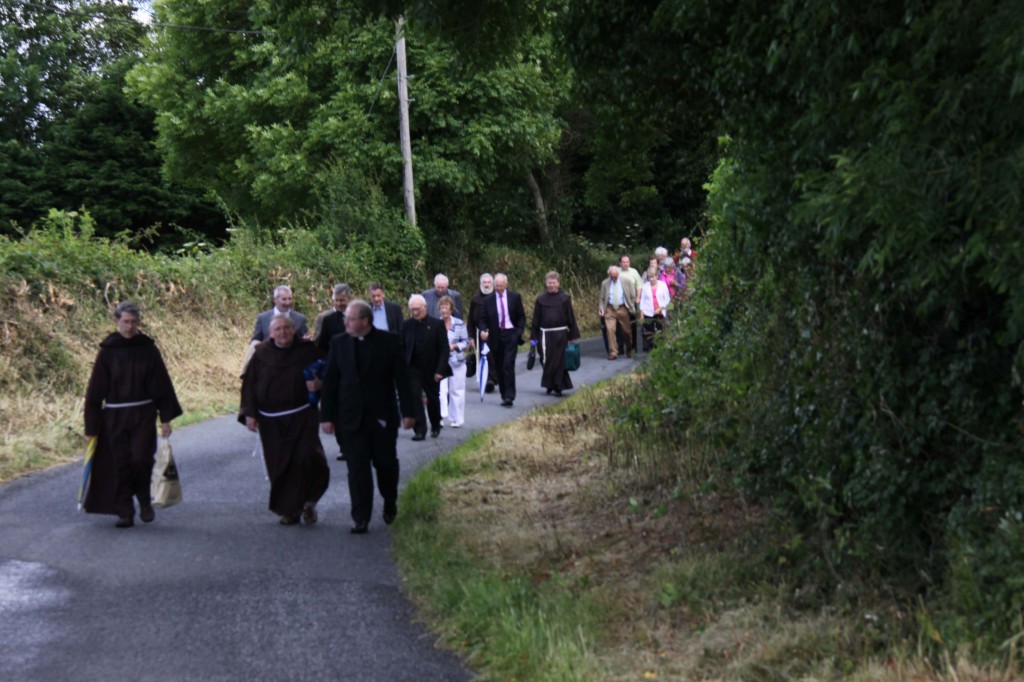
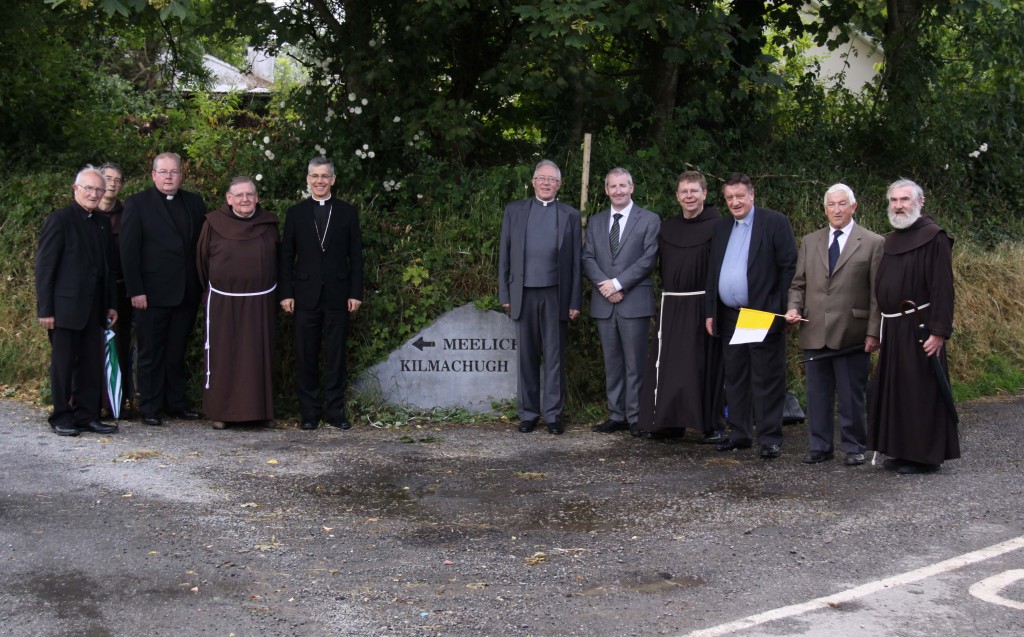
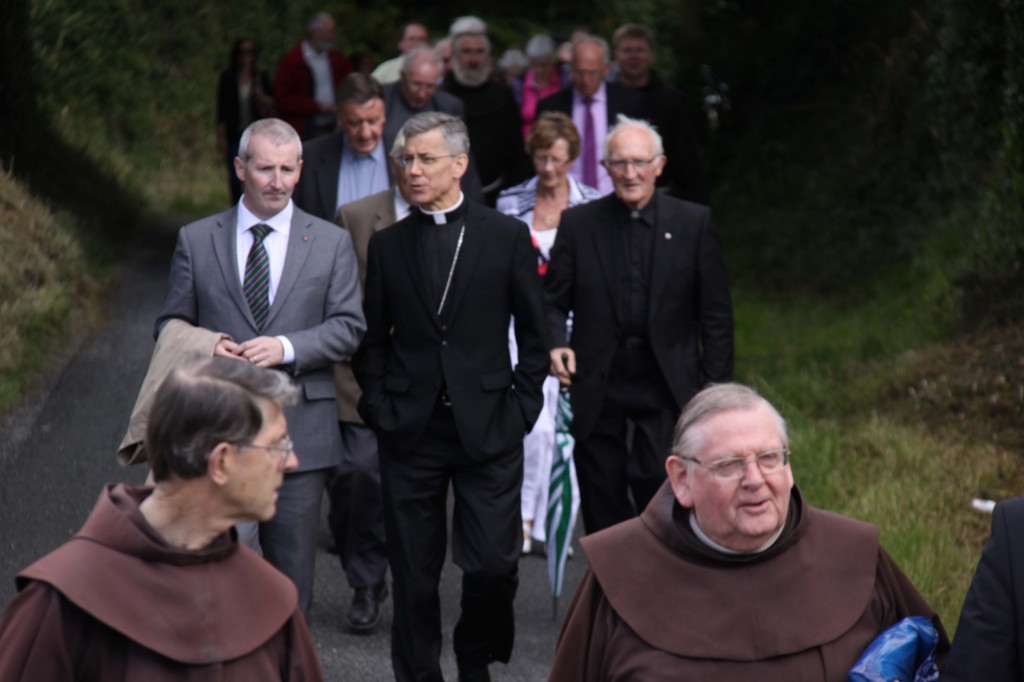
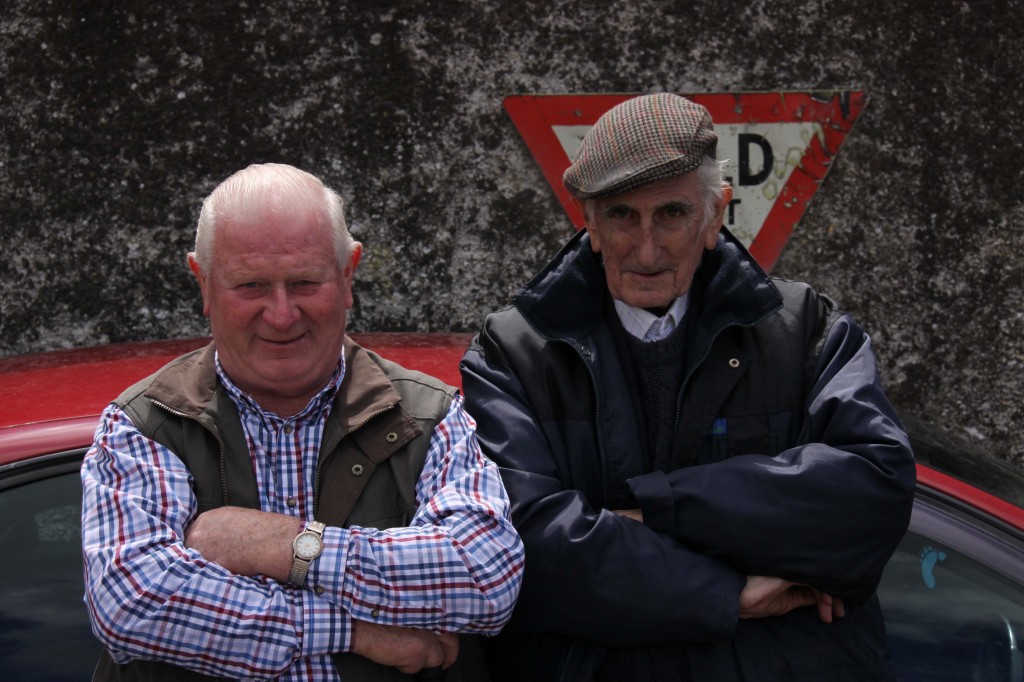
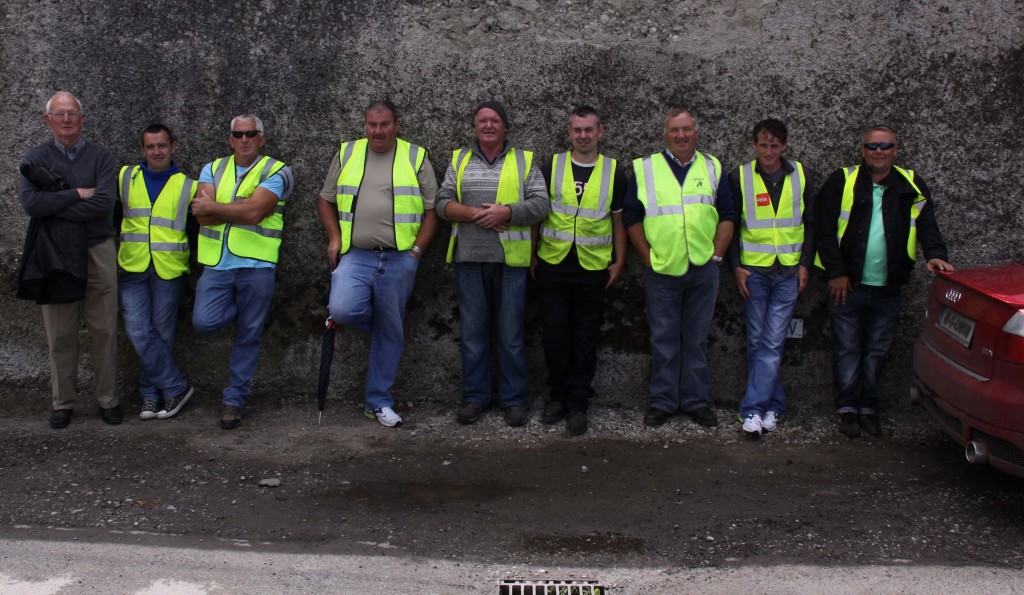
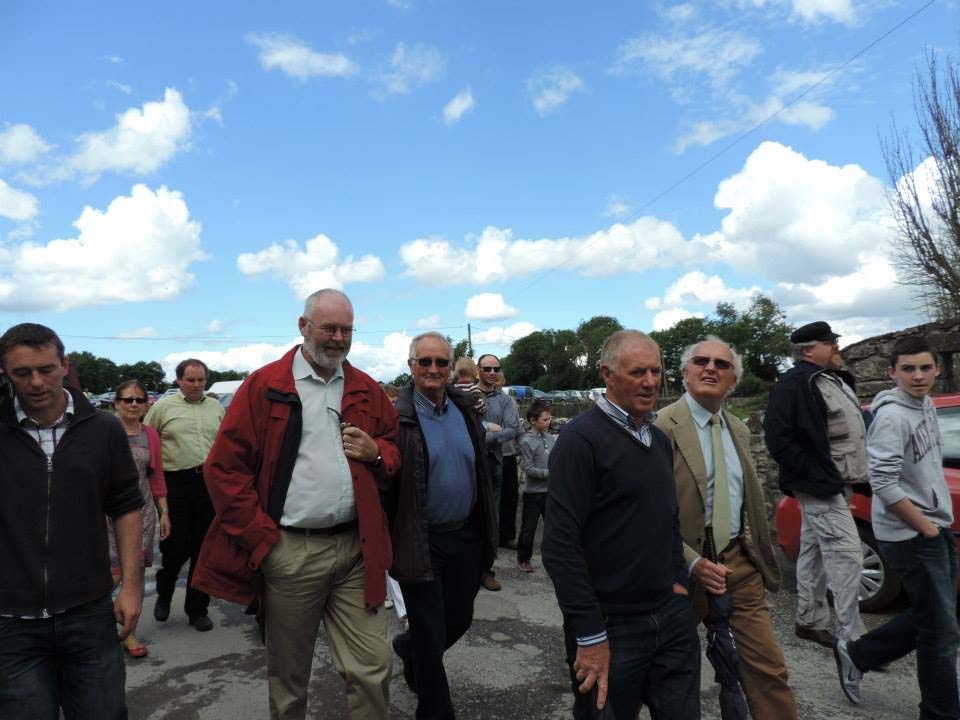
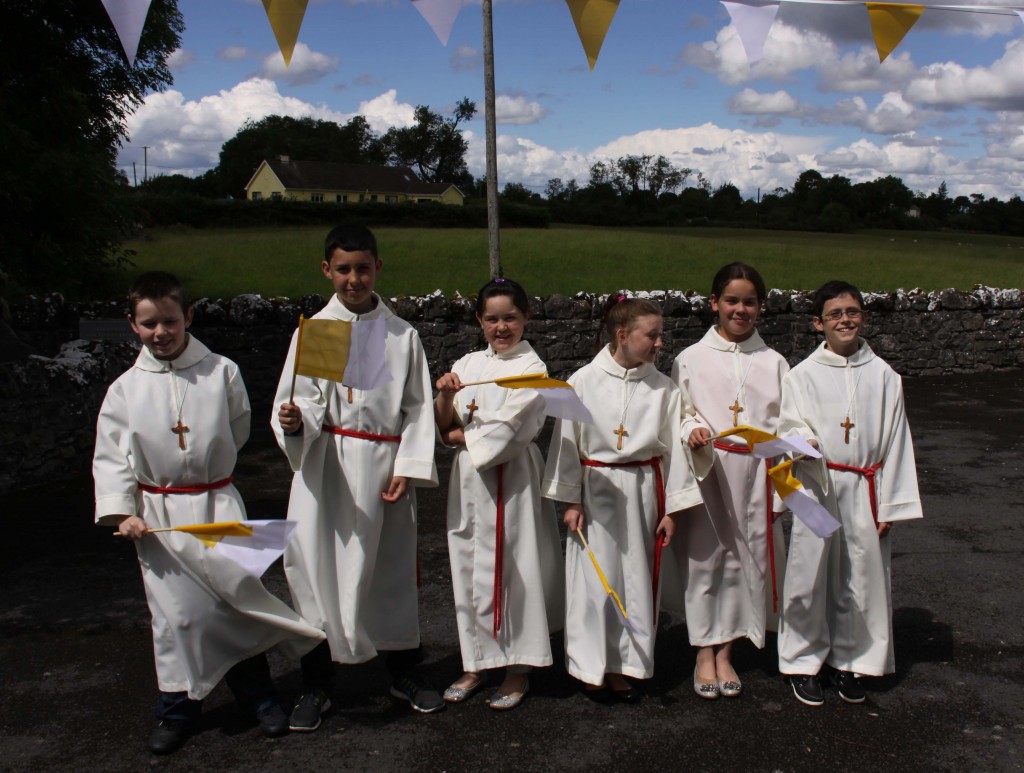
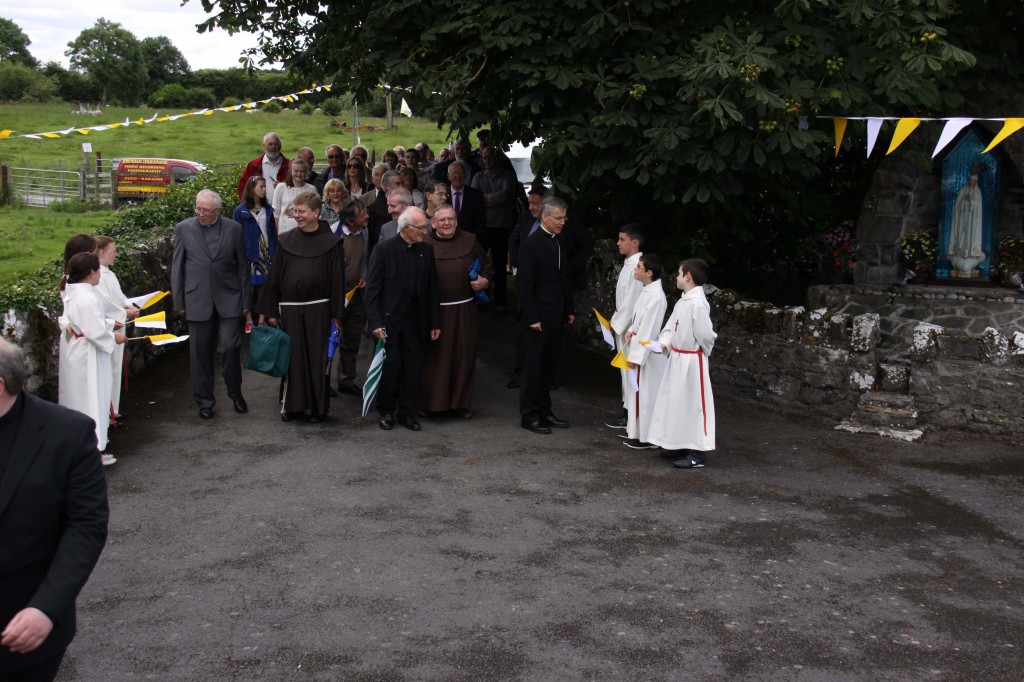
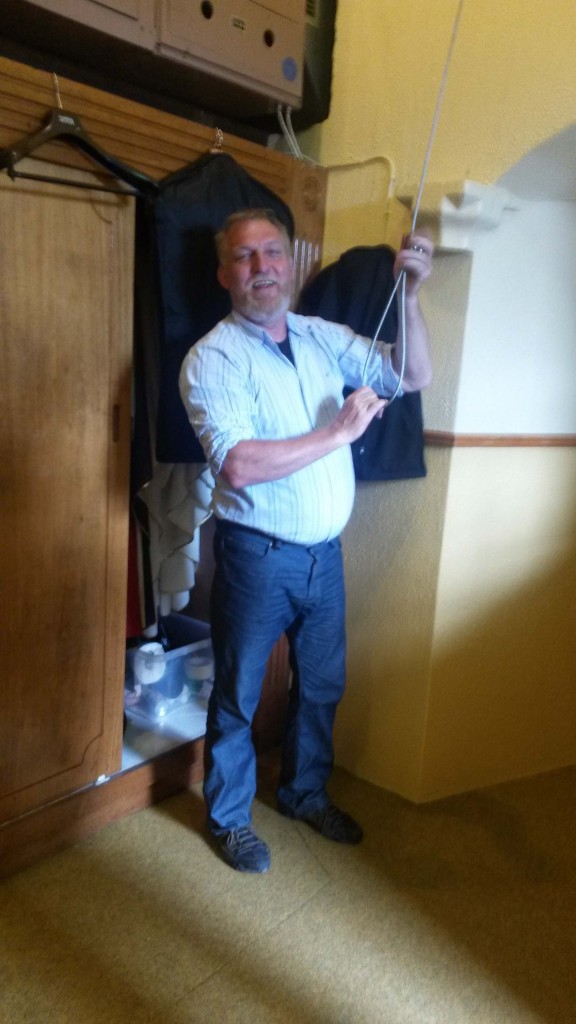
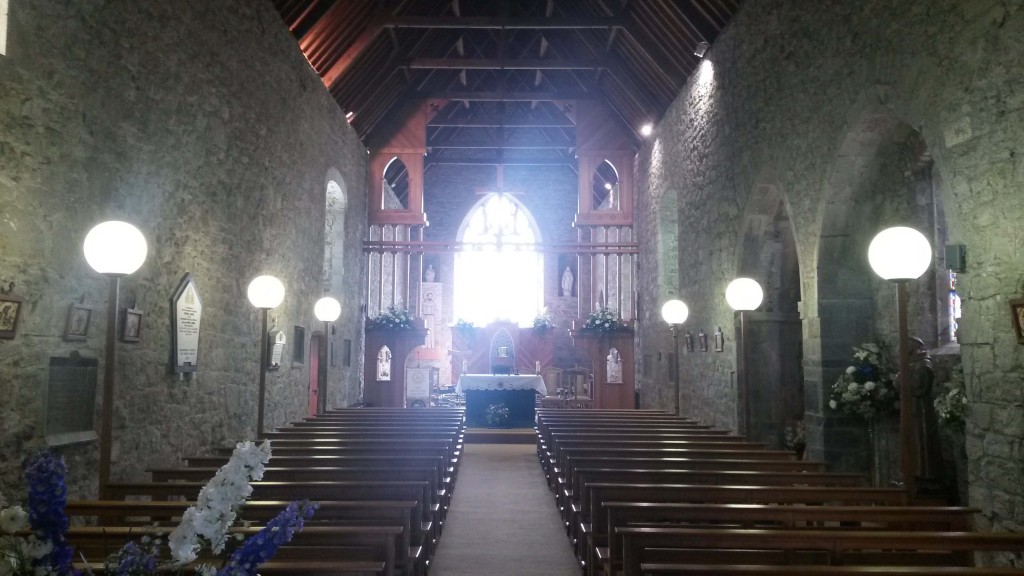
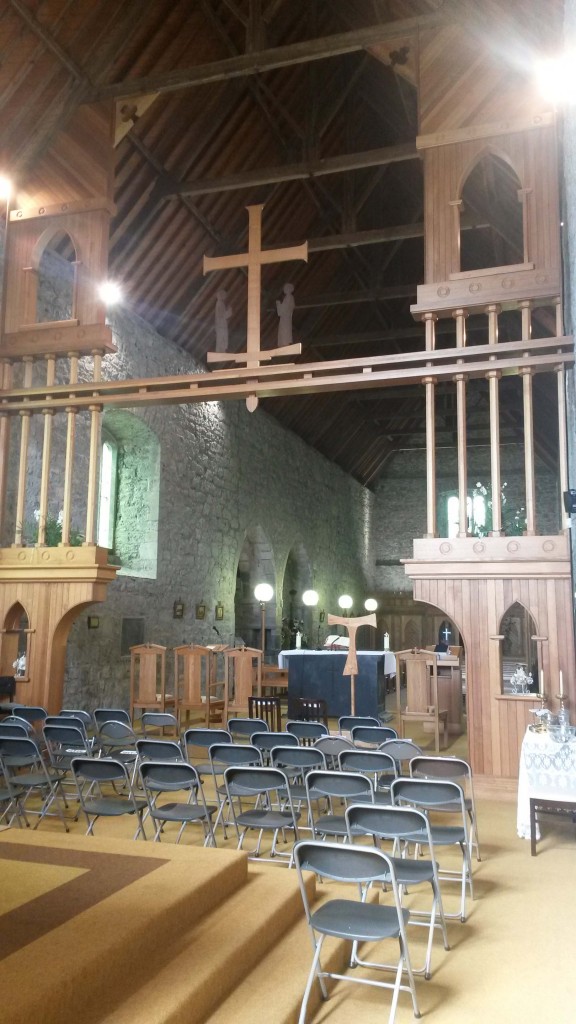
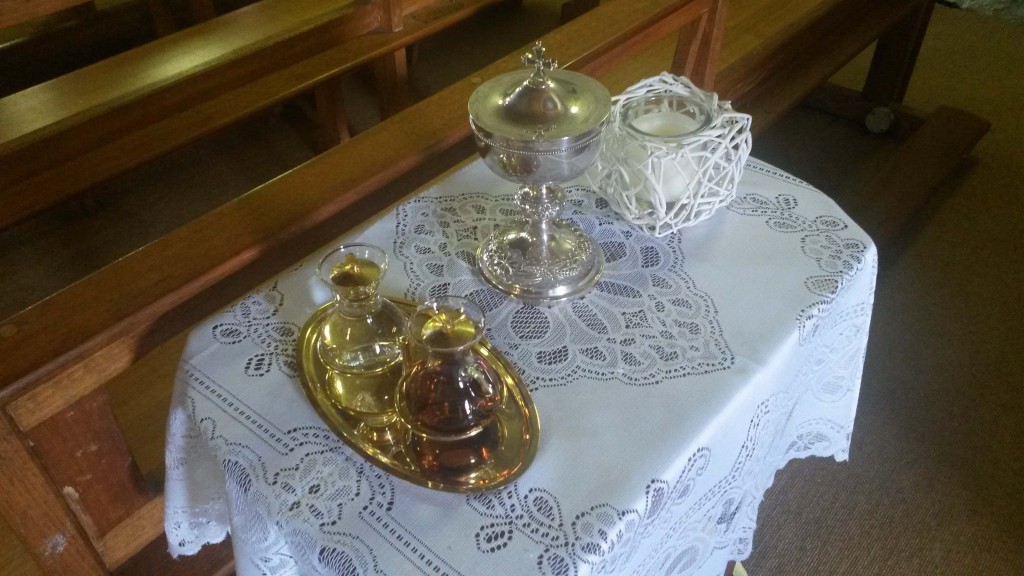
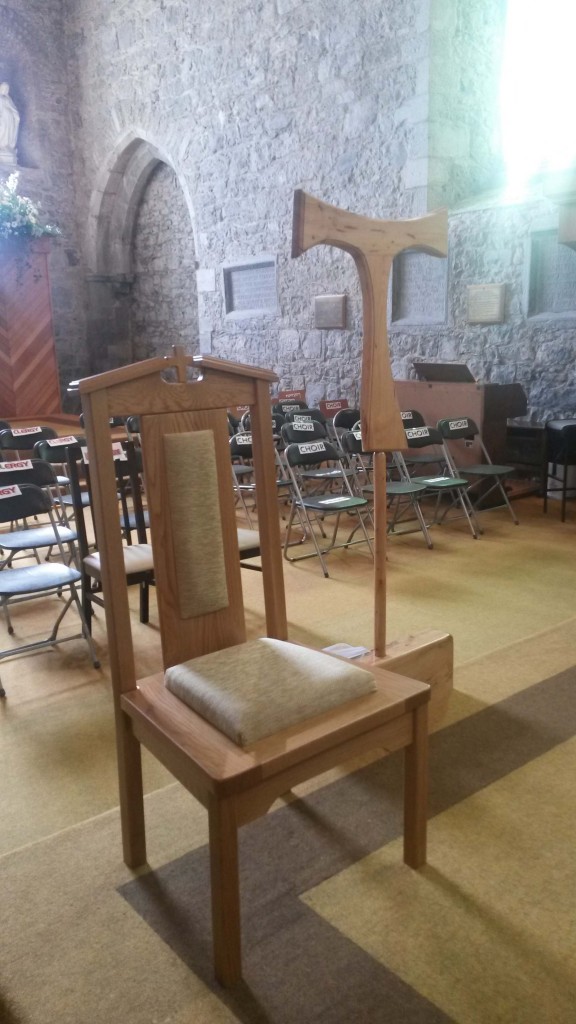
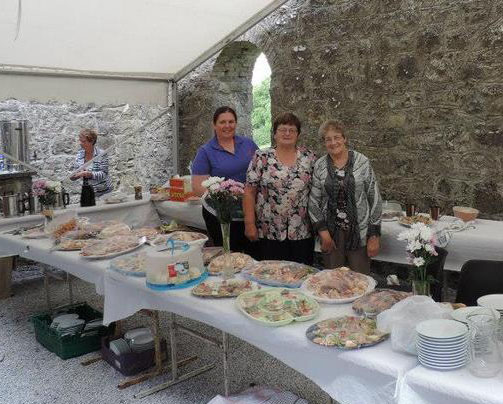
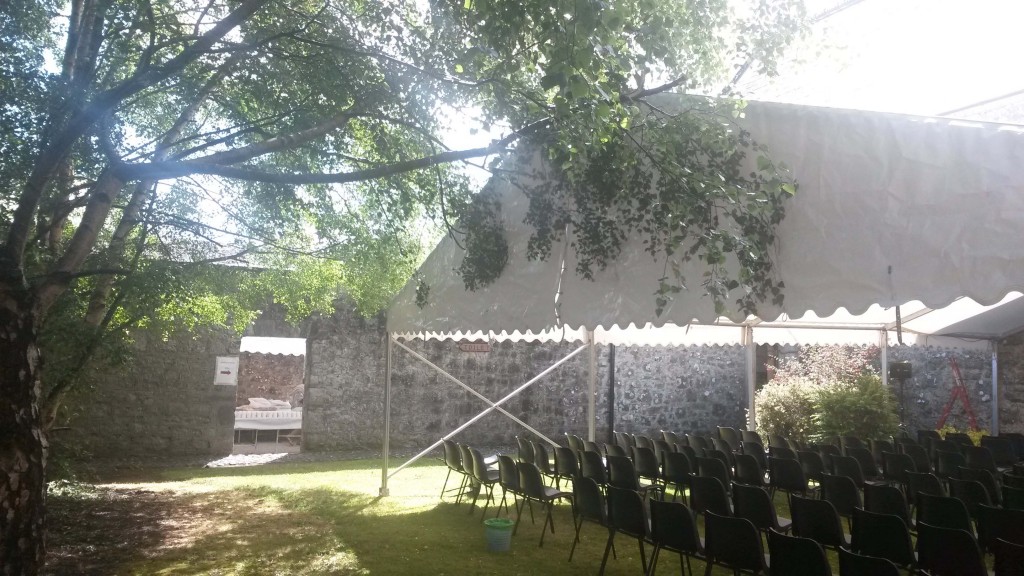
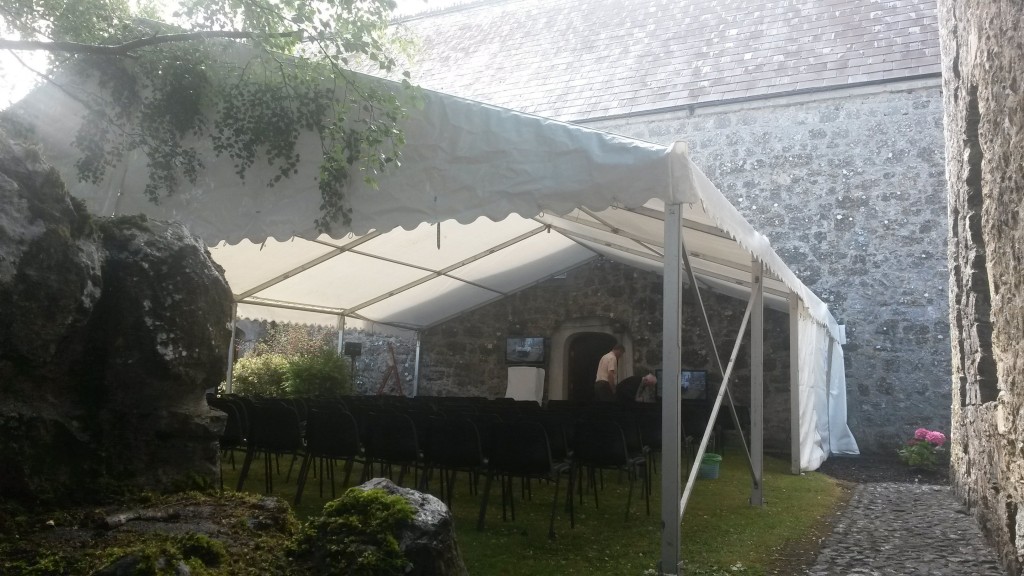
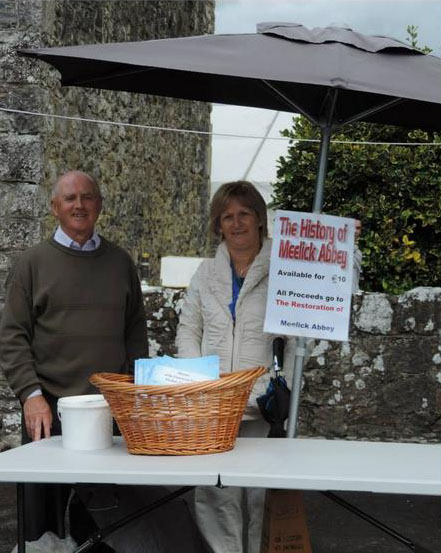
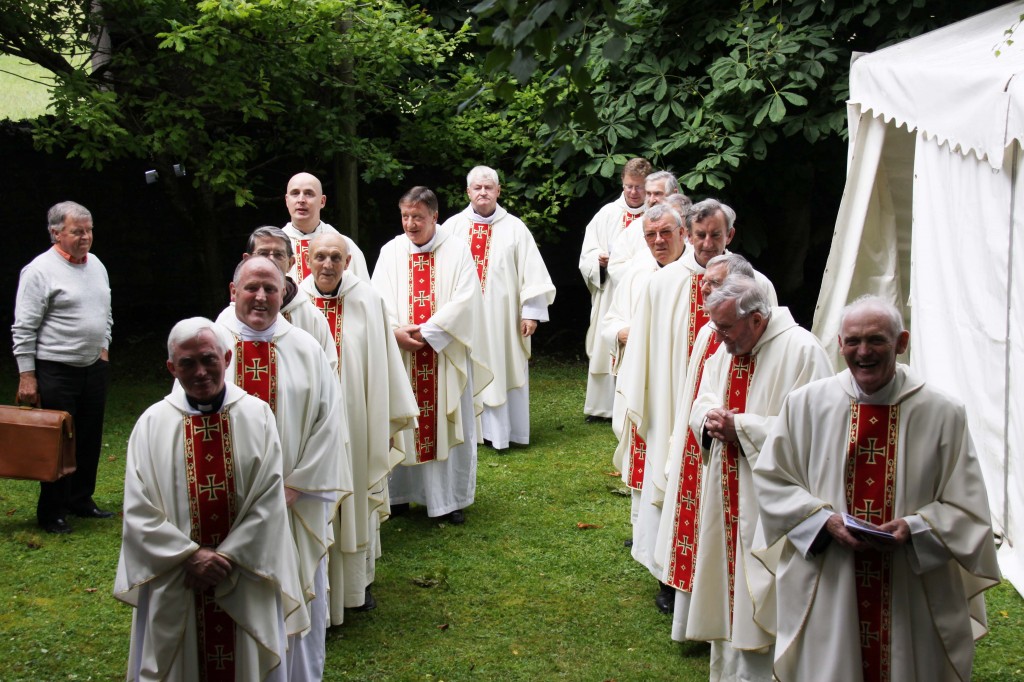
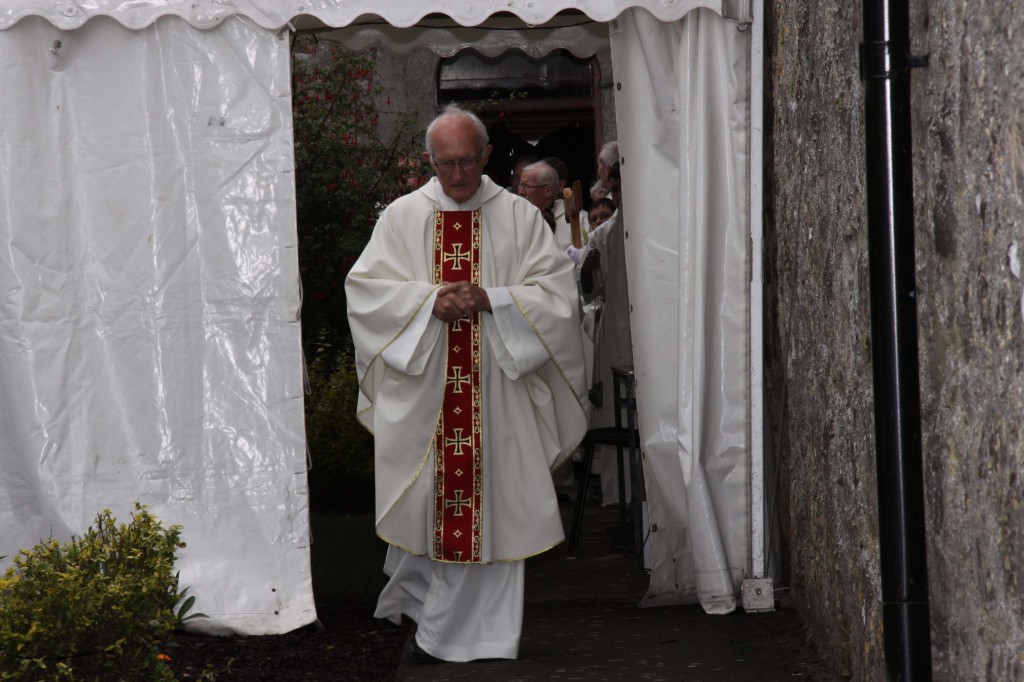
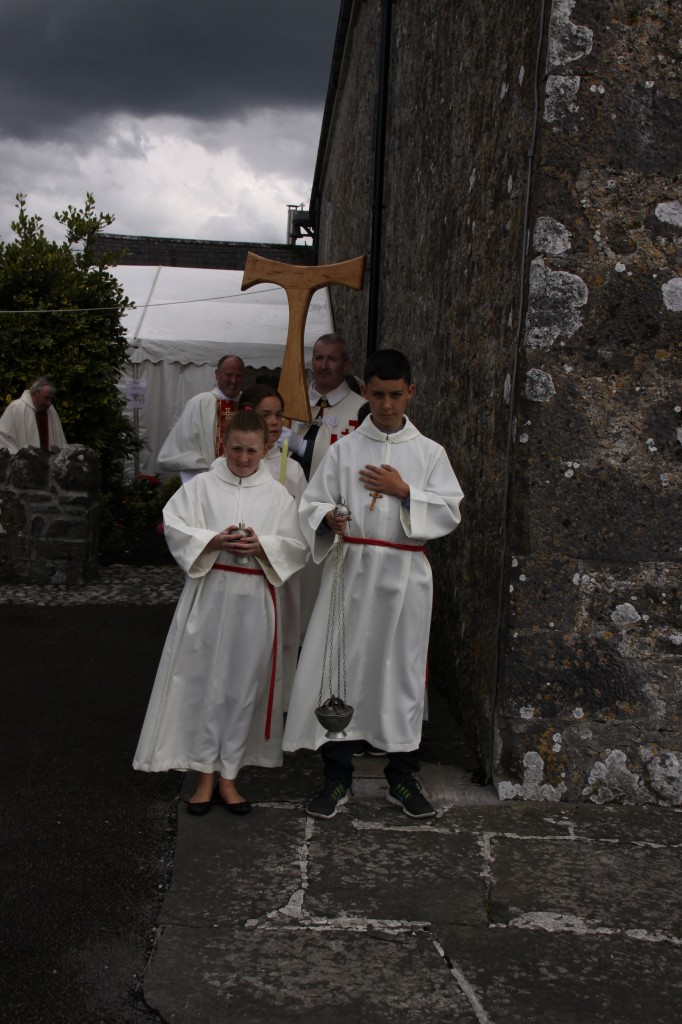
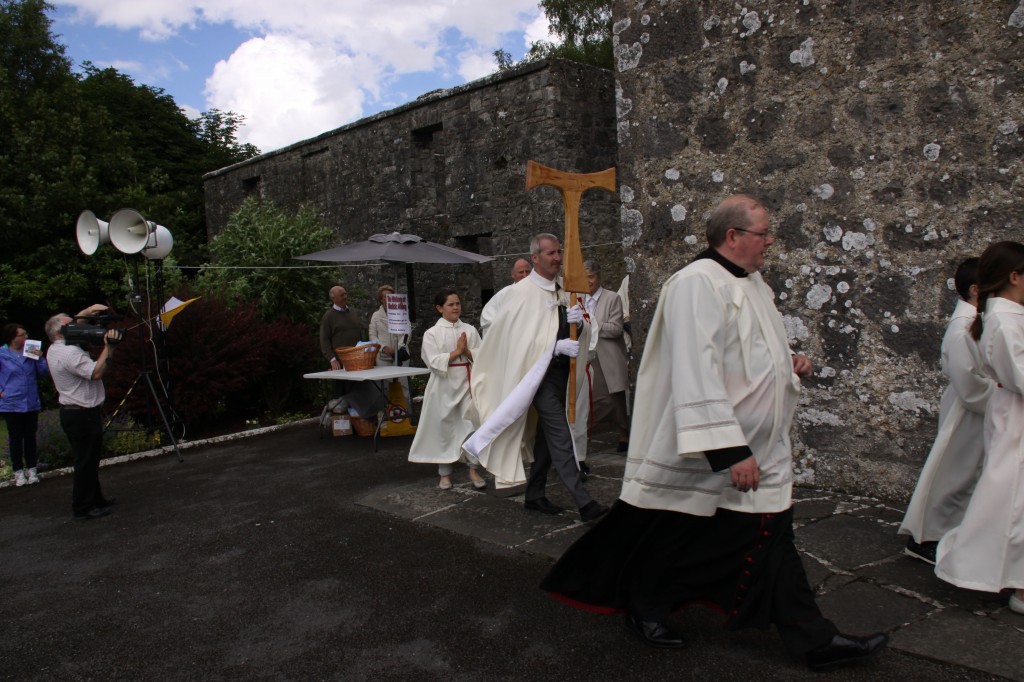
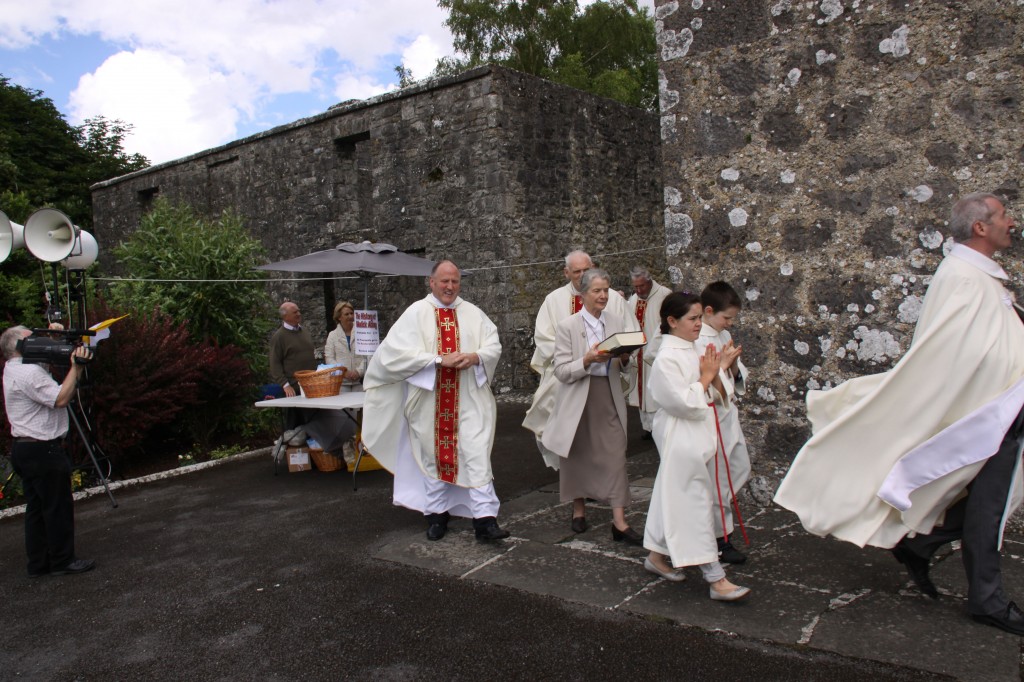
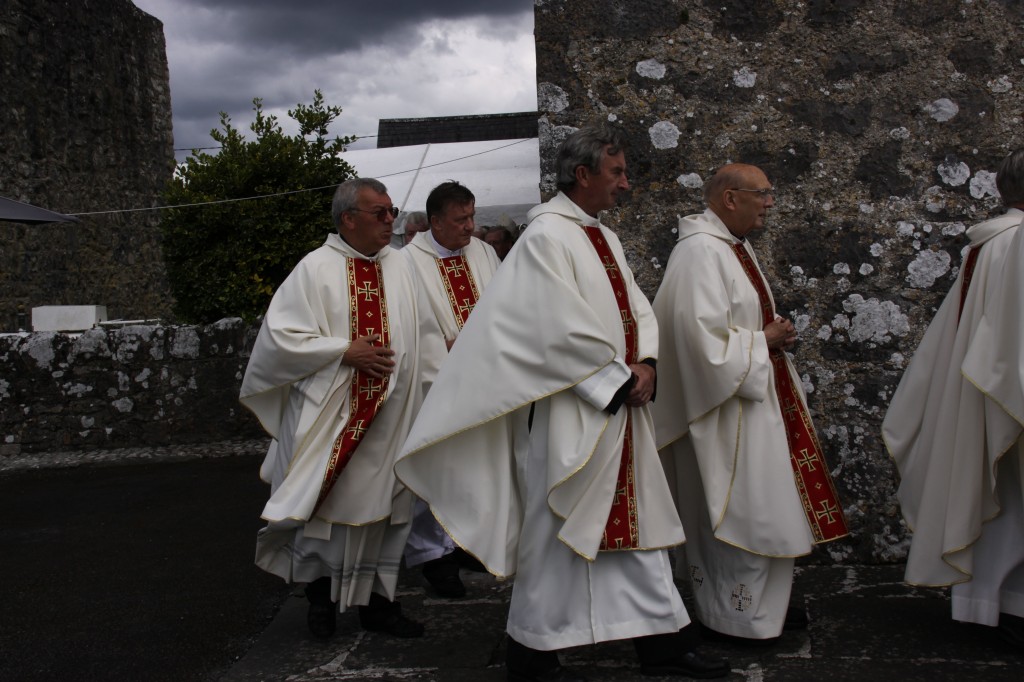
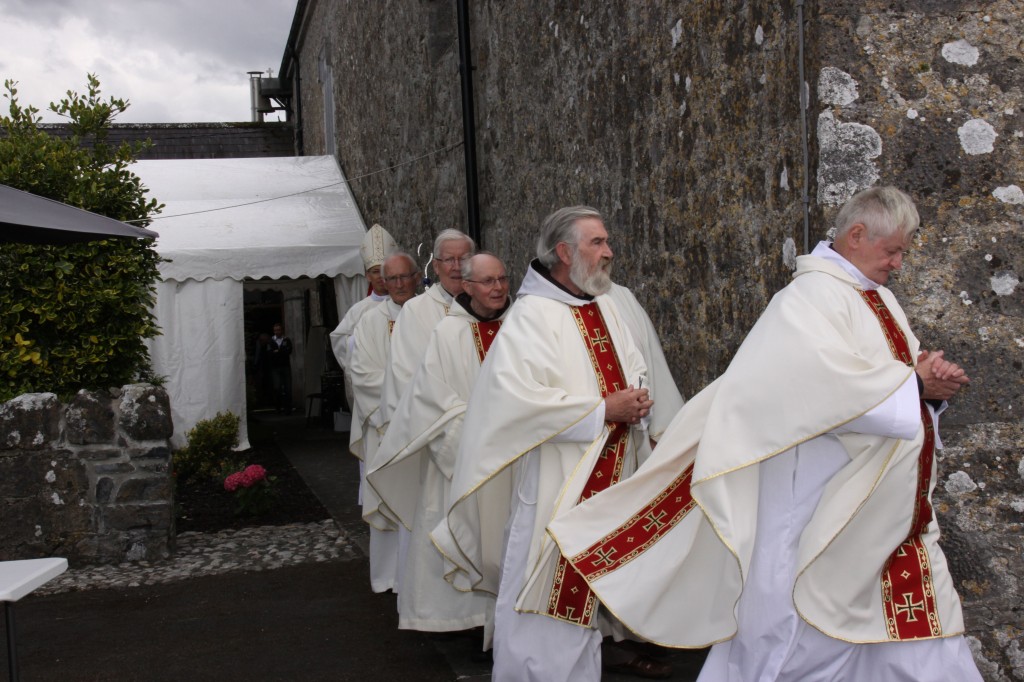
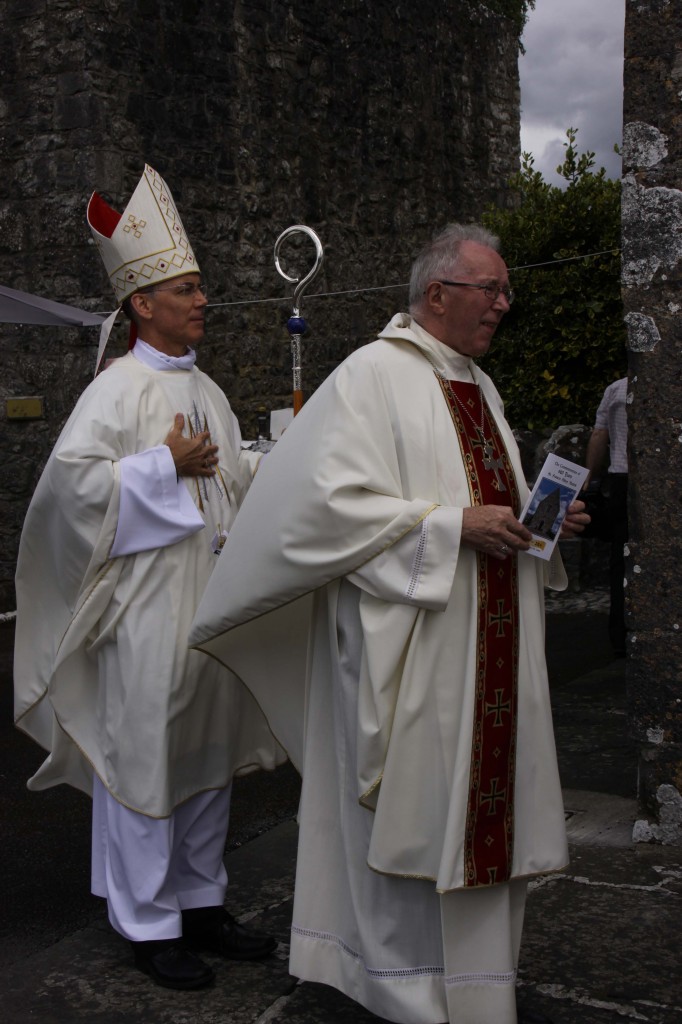
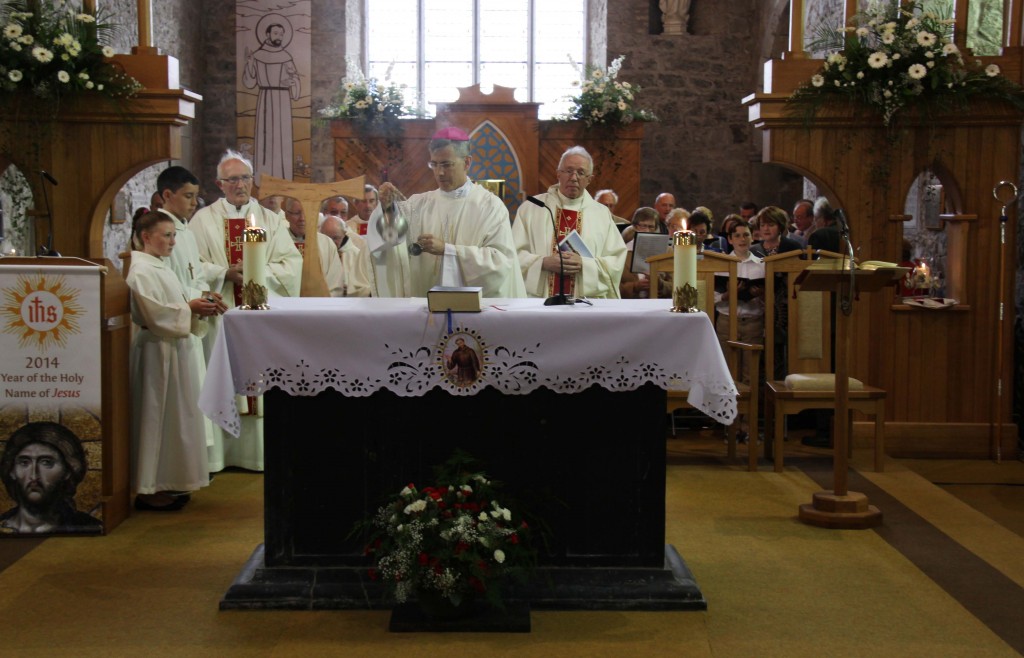
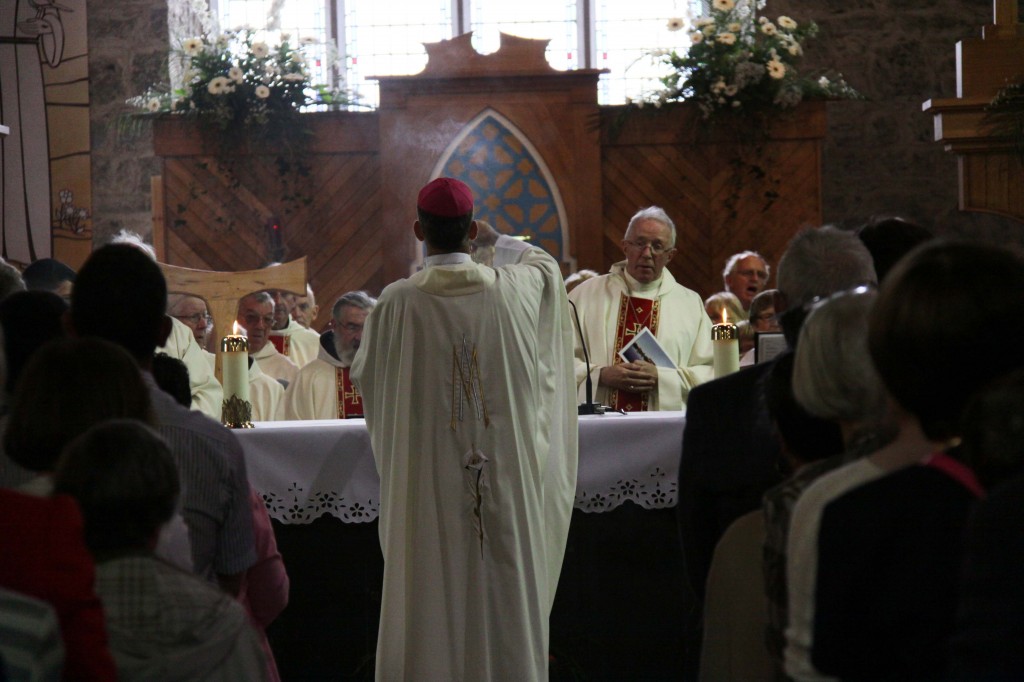
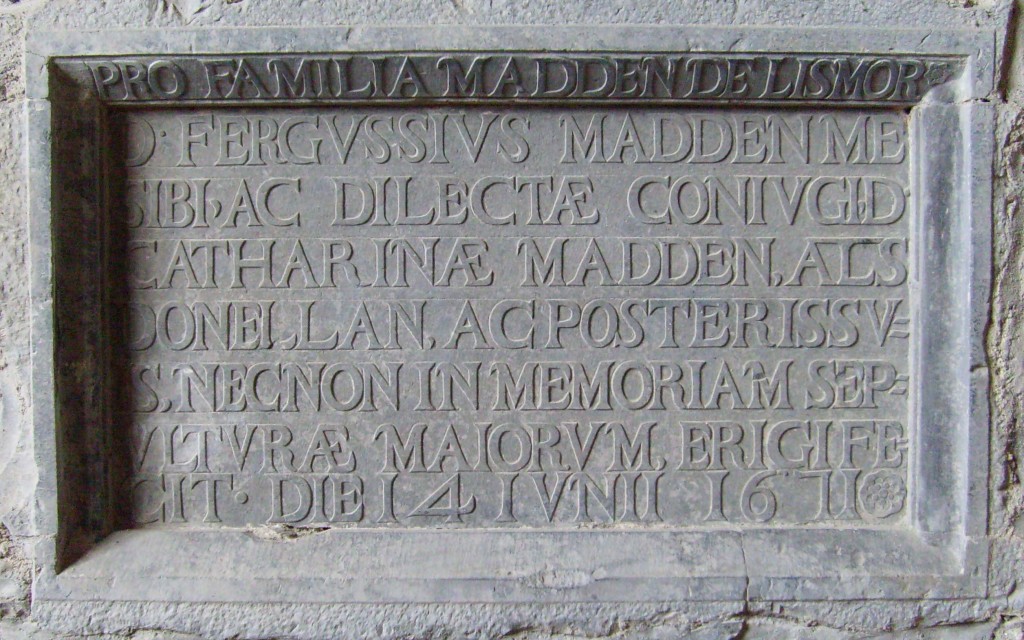
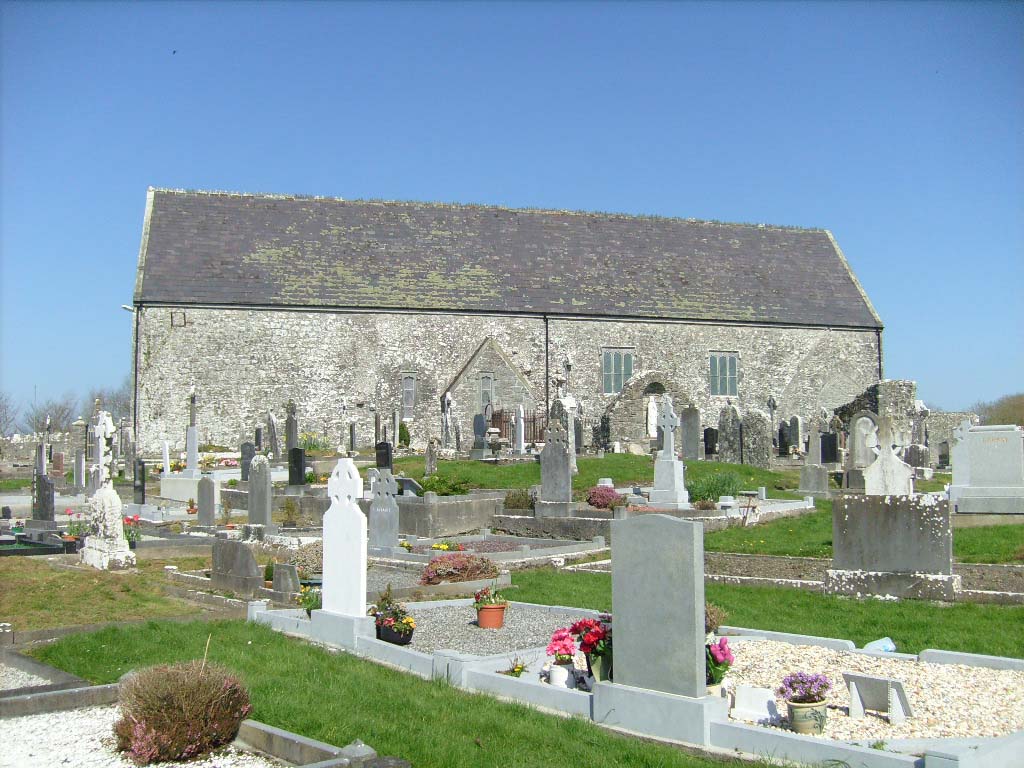
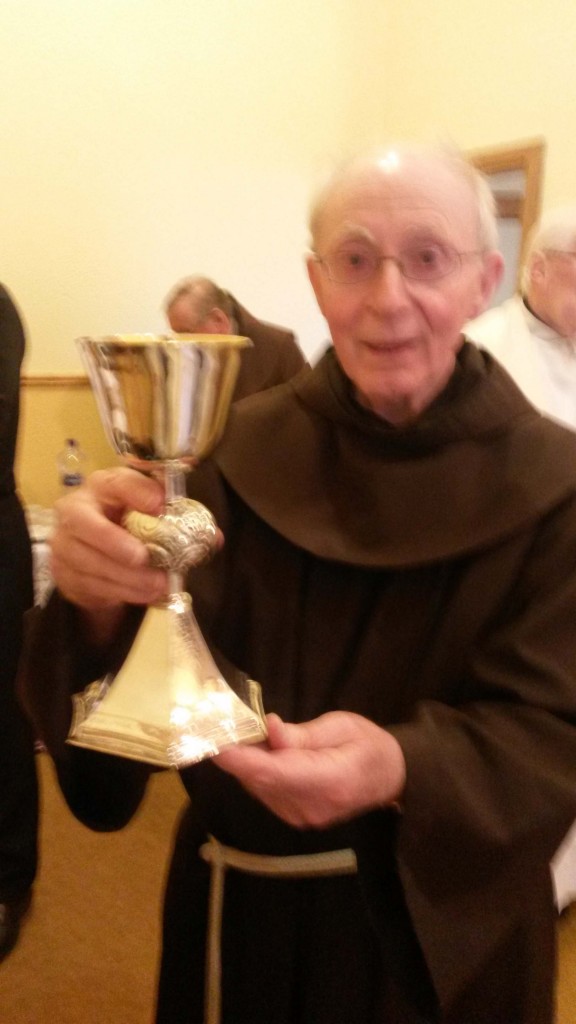
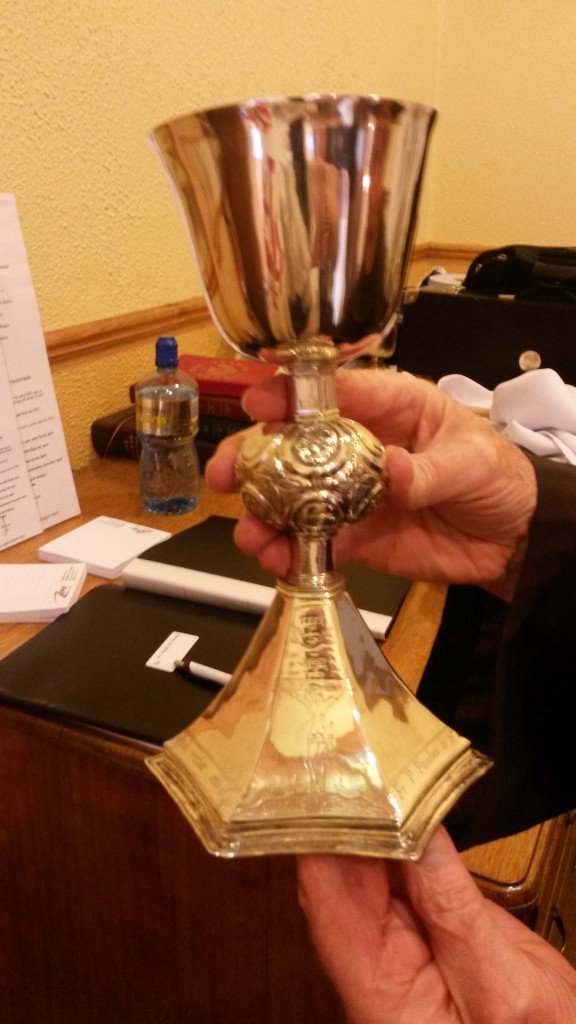
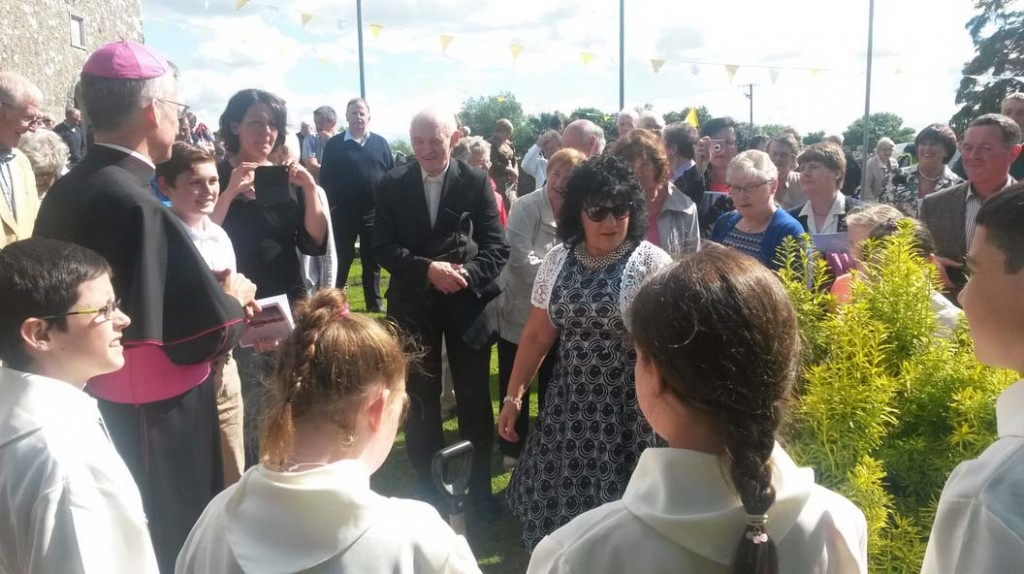
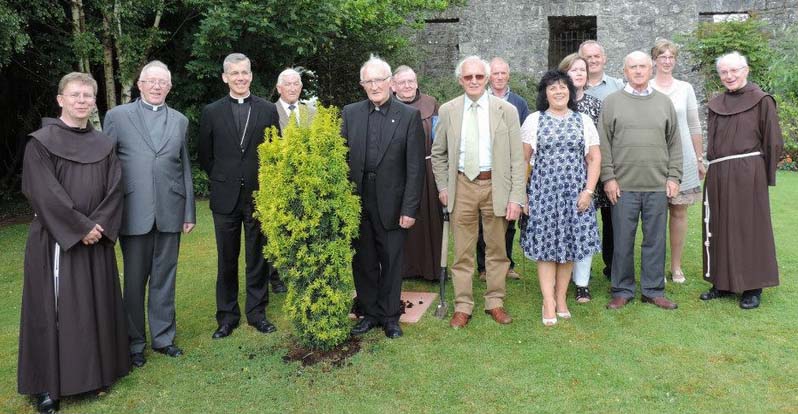
Comments are closed.